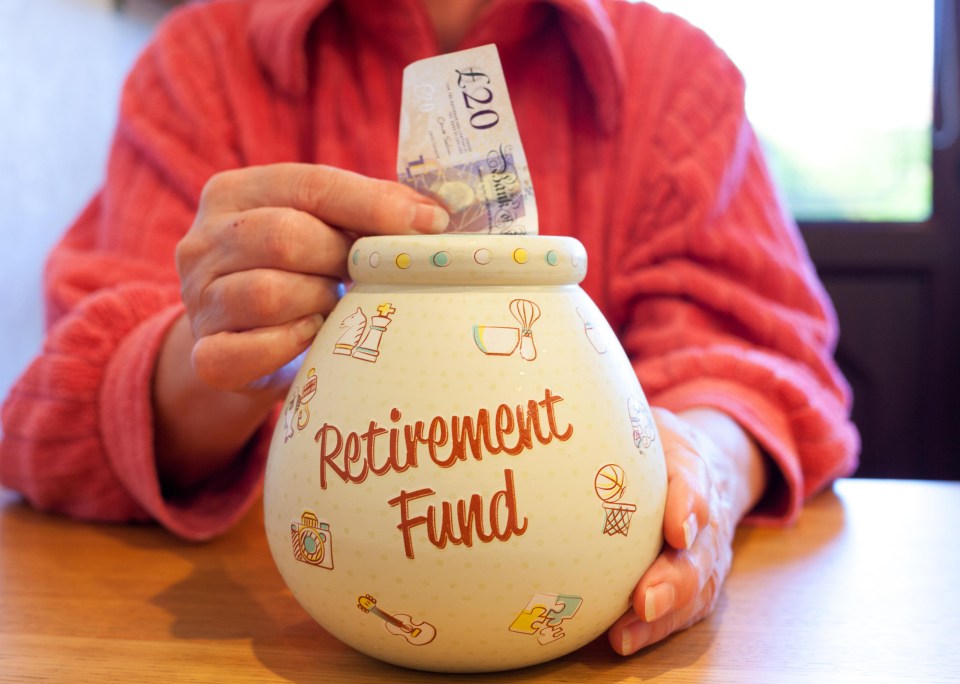PENSION savers are pocketing thousands in tax refunds after being overcharged when they dipped into their retirement pots.
Over 60,000 savers claimed refunds in the 2023-24 tax year, with the average payout coming in at £3,342.
That is according to HMRC figures, which were obtained by Royal London through a freedom of information (FOI) request.
It found about 11,700 pensioners claimed back £5,000 or more, including 2,400 who were given refunds in excess of £10,000.
A handful of people in the UK were also given a refund worth more than £100,000.
The study also found there was a 20% increase in the number of people claiming refunds compared to the prior year.
The amount people were given as a refund also grew by 9% or £280 on average.
For the past decade, anyone over 55 can access their pension flexibly, but HMRC often taxes large withdrawals as if they will be repeated monthly, resulting in over payments..
You can start taking cash from a defined contribution (DC) scheme or personal pension when you reach 55.
Usually, you can take the first 25% of your pension tax-free, and then anything after that is taxed at the usual income tax rate.
But people who take large one-off lump sums on their first withdrawal from these types of pensions are taxed at an “emergency” higher rate of income tax.
This leaves retirees facing huge sums deducted from their payouts, temporarily leaving them out of pocket.
Clare Moffat, pension expert at Royal London, said: “It’s incredible to think that some people withdrawing from their pension for the first time were entitled to emergency tax refunds in excess of £100,000.
“Not only do these taxes usually come as a massive shock, the unexpected tax amount can also scupper people’s carefully laid plans”.
She added: “HMRC recently announced an overhaul of its emergency taxing codes on pensions, which it promises will deliver quicker refunds, but that doesn’t mean people won’t still be charged the higher rate in the first place.”
An HMRC spokesperson said: “Ultimately, nobody overpays tax as a result of taking advantage of pension flexibility.
“We will repay anyone who pays too much because they’re on an emergency tax code, and individuals can claim a repayment much earlier if they wish.”
How to get your cash back
If you’ve withdrawn a large amount from your pension pot, you need to fill in a form to get your cash back as quickly as possible.
You can wait for HMRC to review your tax code at the end of the tax year and it will process a refund, but obviously, this means you could be waiting a while.
To get the cash back faster, you can fill in one of three forms: a P55, P53Z or a P50Z which can all be found on the Government’s website.
Which form you need to fill out will depend on how you have accessed your retirement pot:
- If you’ve emptied your pot by flexibly accessing your pension and are still working or receiving benefits, you should fill out form P53Z,
- If you’ve emptied your pot by flexibly accessing your pension and aren’t working or receiving benefits, you should fill out form P50Z,
- If you’ve only flexibly accessed part of your pension pot then use form P55.
HMRC said it aims to process refunds within 30 days.
To avoid having emergency tax deducted in future, try taking smaller amounts out rather than one lump sum.
What are the different types of pensions?
WE round-up the main types of pension and how they differ:
- Personal pension or self-invested personal pension (SIPP) – This is probably the most flexible type of pension as you can choose your own provider and how much you invest.
- Workplace pension – The Government has made it compulsory for employers to automatically enrol you in your workplace pension unless you opt out.
These so-called defined contribution (DC) pensions are usually chosen by your employer and you won’t be able to change it. Minimum contributions are 8%, with employees paying 5% (1% in tax relief) and employers contributing 3%. - Final salary pension – This is also a workplace pension but here, what you get in retirement is decided based on your salary, and you’ll be paid a set amount each year upon retiring. It’s often referred to as a gold-plated pension or a defined benefit (DB) pension. But they’re not typically offered by employers anymore.
- New state pension – This is what the state pays to those who reach state pension age after April 6 2016. The maximum payout is £203.85 a week and you’ll need 35 years of National Insurance contributions to get this. You also need at least ten years’ worth to qualify for anything at all.
- Basic state pension – If you reach the state pension age on or before April 2016, you’ll get the basic state pension. The full amount is £156.20 per week and you’ll need 30 years of National Insurance contributions to get this. If you have the basic state pension you may also get a top-up from what’s known as the additional or second state pension. Those who have built up National Insurance contributions under both the basic and new state pensions will get a combination of both schemes.













